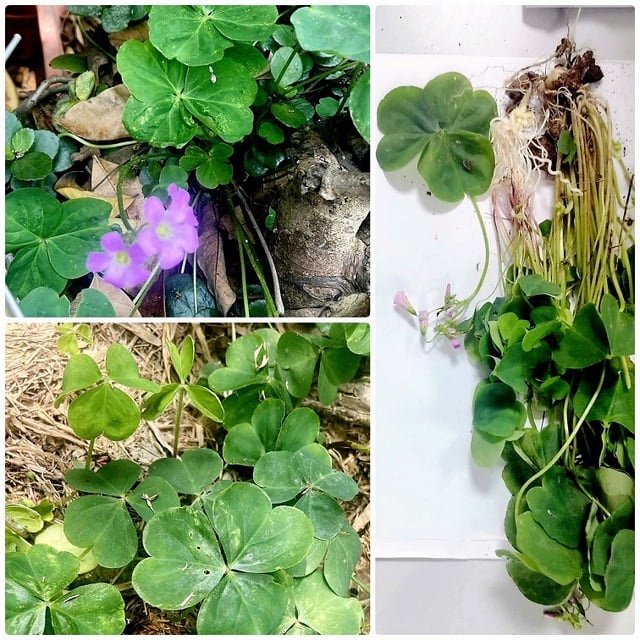Doctor - pharmacist Nguyen Thanh Triet, Deputy Head of the Department of Traditional Medicine, University of Medicine and Pharmacy, Ho Chi Minh City, said that there are two types of tamarind: yellow-flowered tamarind with the scientific name Oxalis corniculata L and red-flowered tamarind with the scientific name Oxalis corymbosa DC, both belonging to the Oxalidaceae family. According to oriental medicine, yellow-flowered tamarind has a sour taste, cool properties, and has the effect of clearing heat and dampness, cooling blood, dispersing blood stasis, reducing swelling and detoxifying. Yellow-flowered tamarind is often used as medicine, while rose-flowered tamarind is often used as an ornamental plant and is used in quite low doses.
"If you drink a small dose of yellow tamarind, it will not cause any harm. However, if you drink too much like the patient in Hanoi (0.5 kg), you will absorb a large amount of oxalic acid in the plant. This ingredient can combine with calcium in the body to form calcium oxalate (one of the common ingredients of stones), which is harmful and exceeds the kidney's ability to excrete it," said Dr. Triet.
The patient picked the tamarind tree and boiled it in water to drink, leading to kidney failure (sample provided by the patient)
PHOTO: BVBM
With yellow flower tamarind, usually use 30-50g (whole plant or fresh leaves) to boil water to drink, when using dry only need 5-10g. However, using tamarind as well as other herbs as medicine requires a doctor's prescription depending on the physical condition, disease and using the right type, right dosage, preparation method... Reading information online and using it on your own can potentially pose many risks to the patient. For example, if a person already has a weak kidney filtration condition and drinks tamarind, it will make the condition worse, increasing the risk of acute kidney failure.
"Before using any medicinal herbs, patients need to be consulted by a qualified doctor to suit their health and condition... People should not arbitrarily use plants around the garden to treat diseases without a prescription, because the type of plant, dosage, and improper preparation can also change the activity causing poisoning, endangering health, and even causing death," pharmacist Triet advised.
Acute renal failure due to self-picking tamarind trees in the garden to boil water to drink
Previously, on April 21, information from the Poison Control Center, Bach Mai Hospital said that this unit received a female patient (62 years old, in Hanoi) with kidney damage, acute kidney failure due to believing in an online recommendation, picking wild plants growing in the garden to boil water to drink. The type of plant the woman drank is said to be purple tamarind.
According to the patient, because she saw people sharing online about the tamarind tree having cooling and detoxifying effects, and because her aunt often boiled it to drink to treat kidney stones and diabetes, and there were many trees growing in her garden, she pulled them out to use.
The patient said that while cleaning the garden, he pulled up a large basket of about 0.5 kg of tamarind, about the size of a bunch of water spinach. He used both the white roots and each bunch of tubers, some as big as a little finger, washed them to boil water to drink. The tamarind was boiled until soft, condensed from 1.5 liters of water to 600 ml, about 3 cups of water. He drank 2 cups and left 1 cup for his 85-year-old mother to drink. The water tasted astringent, sour, and salty even though nothing was added to cook it. After drinking it for a short time, he felt uncomfortable, nauseous, and vomited fluid. The next morning, he woke up and went about his normal activities but felt tired, had a headache, and was dizzy. After two days, he felt tired, lightheaded, and had no appetite, so he went to the hospital for a check-up.
At Bach Mai Hospital, doctors at the Poison Control Center said that the patient was admitted conscious, without fever, weakness, nausea, or abdominal pain, and mainly complained of a dull headache. The patient's medical history was only a herniated disc, however, urine and blood tests showed that the creatine index was many times higher than normal, a sign of kidney damage and acute kidney failure.
According to the doctors at the Poison Control Center, the sample of the patient's item was sent to a specialist and identified as Oxalis corymbosa DC. The test results of the item (the sample of Oxalis corymbosa DC the patient drank) at the National Institute for Food Safety and Hygiene showed that it contained oxalic acid. This is the cause of kidney failure when the patient drinks too much.
Source: https://thanhnien.vn/vi-sao-uong-cay-me-dat-co-the-dan-den-ngo-doc-suy-than-cap-185250424224031057.htm






























































































![[Infographic] In 2025, 47 products will achieve national OCOP](https://vphoto.vietnam.vn/thumb/402x226/vietnam/resource/IMAGE/2025/7/16/5d672398b0744db3ab920e05db8e5b7d)





Comment (0)